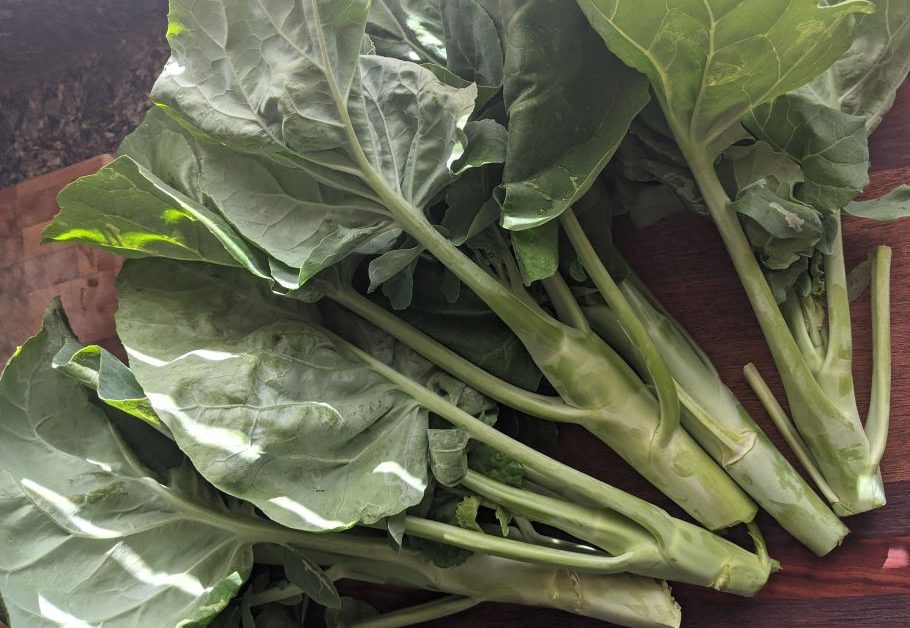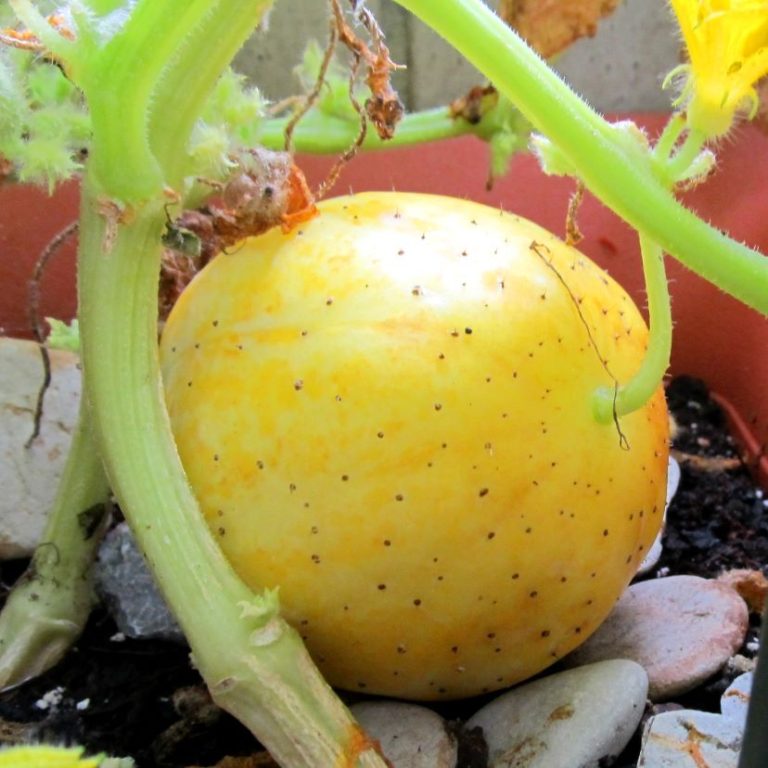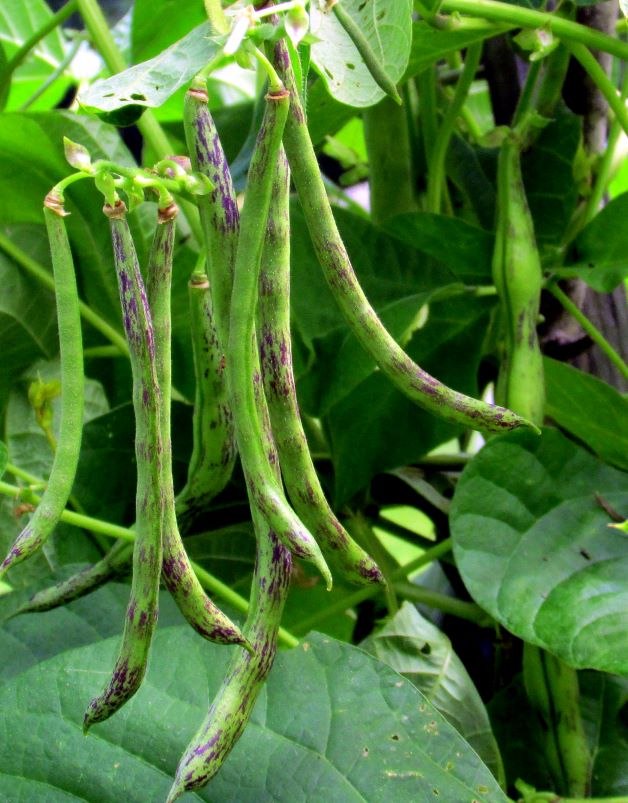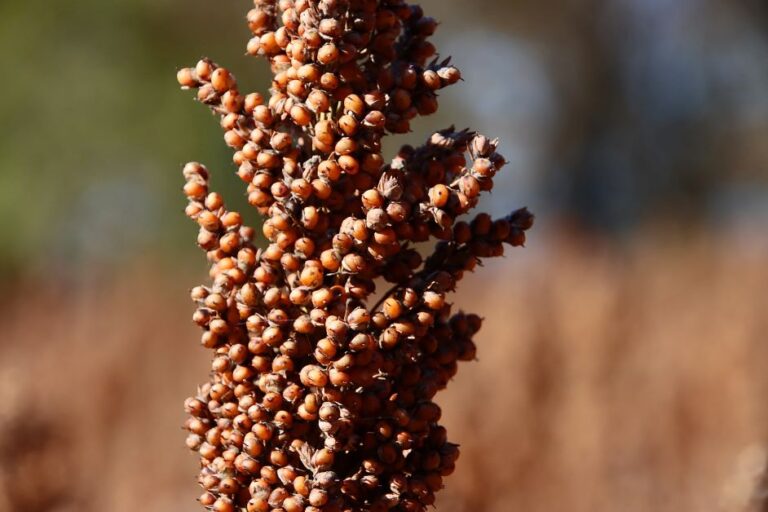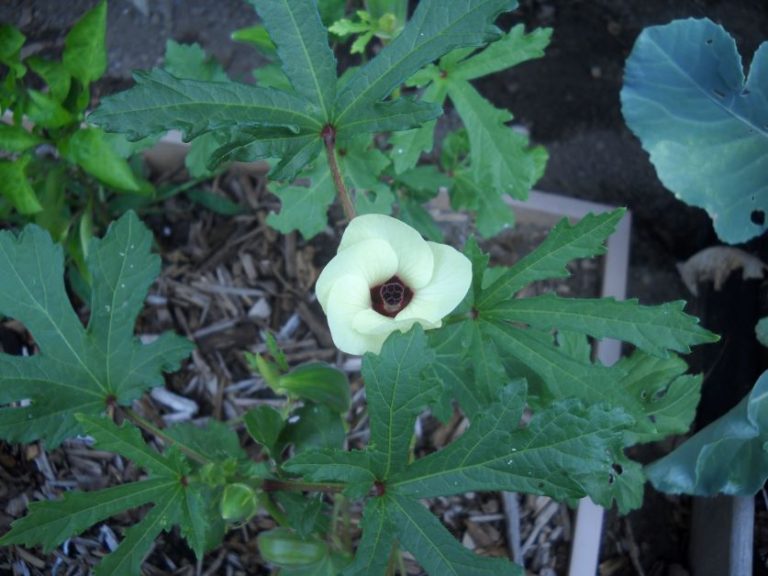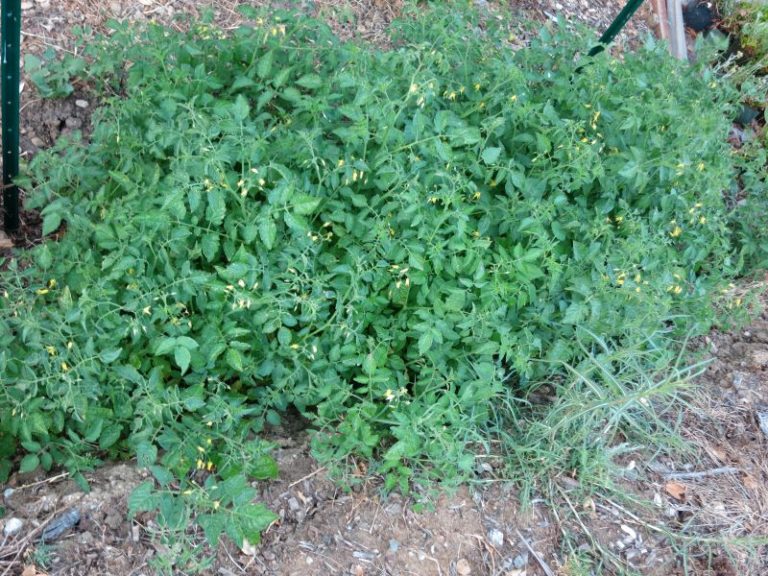How to Grow Gai Lan
Gai lan isn’t a well-known vegetable in the United States, but it should be – it’s absolutely delicious. It tastes like a cross between asparagus and broccoli, but less bitter.
Gai lan is the perfect crop for gardeners who have a hard time growing broccolli. Because it’s so easy to grow, I include at least 10 gai lan plants in my Florida winter garden every year. Learn how to grow gai lan and add it to your fall or winter garden this season.
What is Gai Lan?
Chinese broccoli, Chinese kale, kai-lan, and jie lan are all different ways of saying the same thing: gai lan.
Gai lan is a member of the Brassica family, making it a relative to cabbage, bok choy, broccoli, cauliflower, kohlrabi, rutabaga, and turnip. Collectively, these vegetables are called cole crops.
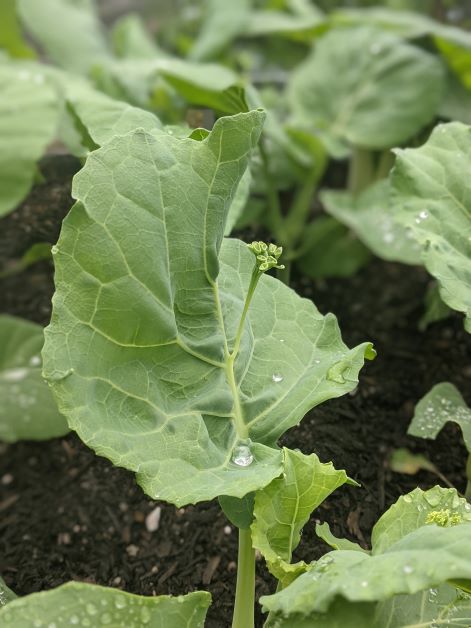
The interesting thing about gai lan is how you eat it – the stalk of the plant is the star of the show and the leaves are the supporting cast. While Chinese broccoli does produce small, loose florets, it’s usually harvested before these florets form.
Gai lan is a fast-growing vegetable that can handle a few frosts. In a nutshell, under the same conditions as traditional broccoli but is less finicky.
How to Plant Gai Lan
Some people have asked me if you can grow Chinese broccoli from scraps and the answer is no – gai lan will only grow from seed. You can plant your gai lan seeds directly in the ground (also known as direct sowing), or you can transplant them as starters.
To direct sow:
- If needed, amend your soil with kitchen scrap compost 2 weeks before planting
- Plant your gai lan seed about 1/2 deep, keeping 6 inches of space between seeds
- Water your seeds. Keep the soil moist but not soggy
- Your gai lan should germinate in 7-10 days
To transplant as starters:
- Fill a seed starter tray with high-quality potting mix
- Plan your gai lan seeds about 1/2 inch deep
- Water your seeds. Keep your tray moist but not soggy
- Put your tray in a spot that gets plenty of sunlight
- Transplant once your seedlings are about 3 inches tall and have at least 2 true leaves
When to Plant Gai Lan
When you plant gai lan will depend on your location, but as a general rule gai lan season and broccoli season are the same.
Gardeners in regions that experience true winter will want to start their seeds at the end of summer. Those in Florida and other subtropical regions can start their gai lan in fall and grow them straight through winter and into spring.
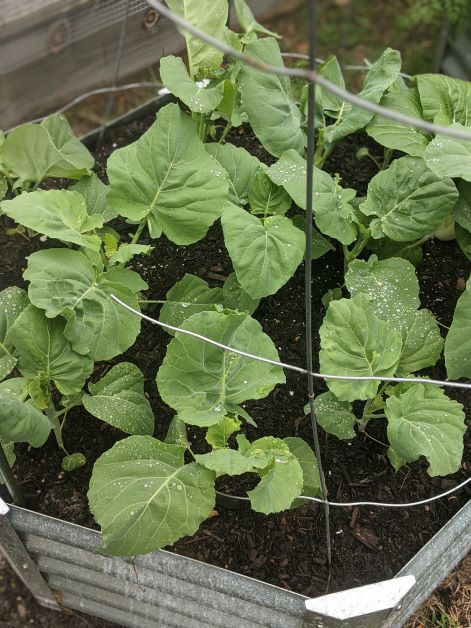
Gai Lan Care
Temperature
Although it’s fairly hardy, the perfect temperature range for gai lan is 50F-75F. Gai lan grown in higher temperatures bolt quicker and may taste bitter.
As a Brassica, gai lan is a cool-weather vegetable. It’s tolerant of temperatures lower than 50F and can even take a few frosts. In fact, some people say a frost or two can make taste gai lan sweeter.
Light
Gai lan is a full sun plant but if you’re having a hard time with premature bolting, then planting it in partial shade can help.
Soil
Gai lan prefers well-drained, fertile, loamy soil that has a pH of 6.0-7.5.
Water
Like most vegetables, gai lan prefers to be moist but not soggy. About an inch of water a week should be enough, but it may need more if it’s especially hot.
Before watering, do the touch test – stick your finger into the soil up to your second knuckle. If the soil is dry 2 or 3 inches below the surface, then you should give your plant some water.
Fertilizing
Set your gai lan up for success by amending your soil with compost a week or two before planting. If you don’t have any compost, then mix in some organic 10-10-10 fertilizer into the soil, following the directions on the package.
Can You Grow Chinese Broccoli in Pots?
Chinese broccoli does great in pots! Just make sure to use a big enough container – 5 gallons or more is best. DIY grow bags are also an excellent choice because they promote proper drainage.
The same spacing rules apply when growing Chinese broccoli in a pot: keep 6 inches between your seedlings.
Gai Lan Troubleshooting
Gai Lan Pests
Cabbage Loopers
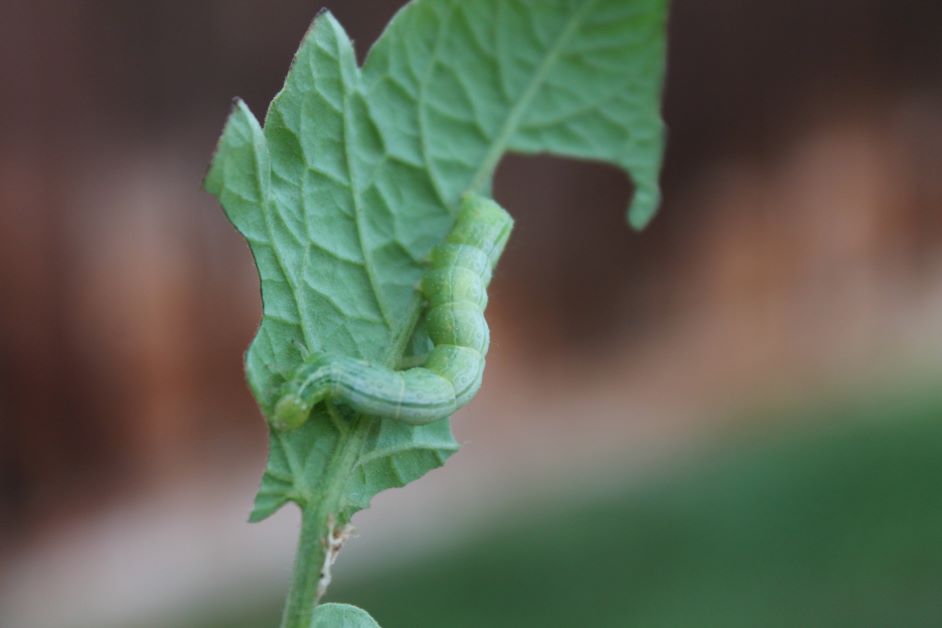
Like all Brassicas, gai lan is a target for cabbage loopers. Check your gai lan regularly for these caterpillars and pick them off by hand.
If you find the infestation growing out of control, spray some Montery BT. This is an organic, naturally-occurring bacteria that will kill off the cabbage loopers without hurting pollinators. Just be sure to keep it away from passionflower vine, milkweed, and other Monarch butterfly host plants, as it can kill butterfly caterpillars.
Aphids
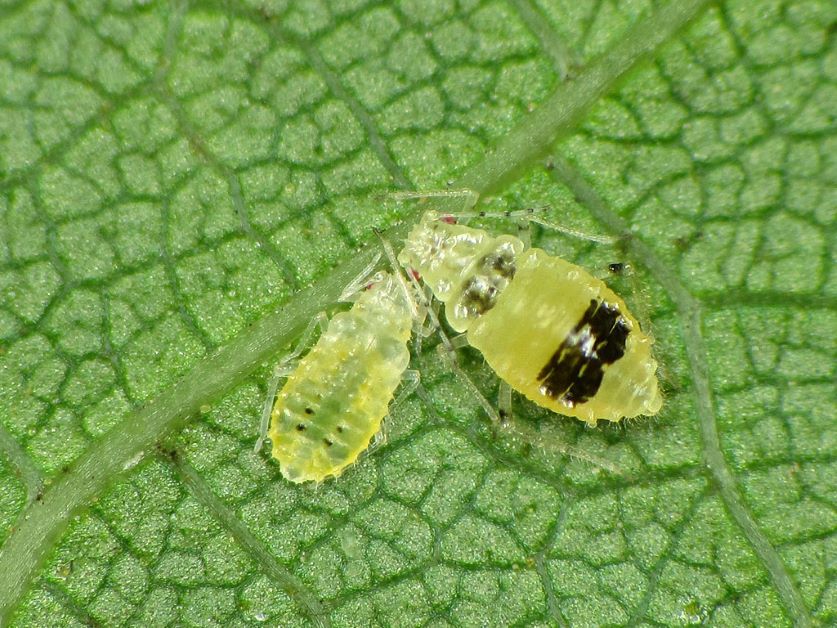
Aphids are a common pest on any leafy green. They’re usually not that big of a deal, as long as you take action at the first sign – an aphid population will quickly explode if left to its own devices.
Slugs

Slugs are another pest that will eat anything green and leafy. They’re especially devastating to young plants and can take out a small crop overnight.
Gai Lan Diseases
Powdery Mildew

Your gai lan and other leafy greens will contract powdery mildew if you water from overhead rather than at the base of the plant.
If your garden is big enough, you may want to consider installing a drip irrigation system. This is a foolproof way of making sure water only gets to where it’s supposed to go.
If you’re not ready for drip irrigation, a water wand hose attachment is a quick, easy way of keeping water off your leaves.
Spacing your plants properly will increase airflow, which will also lessen the chances of powdery mildew.
The best defense against powdery mildew and other fungal diseases is prevention. You can try to treat with organic copper fungicide, but it’s not very effective if your plant is already showing signs of disease.
Harvesting Gai Lan
Gai lan grows fast – depending on the variety, your gai lan will be ready to harvest in 6 to 8 weeks.
This is a “cut and come again” vegetable. That means when you harvest, don’t pull up the entire plant. Instead, cut the stem at the base a few inches above the soil line. After a few weeks growth, your gai lan will again be ready for harvest.
For best taste, harvest your gai lan before the flowers open, and keep the leaves on the stalk.
Here’s a frugal gardener’s trick: a few gai lan bolt and flower at the end of the season. That way, you can harvest some seeds to plant in the upcoming year. Not only will this save you money, but bees love gai lan flowers, too!
How to Store Gai Lan
Your gai lan will keep fresh in the refrigerator for 3 to 5 days. It should snap easily when bent. A rubbery gai lan is old and won’t taste as good.
The most important thing when storing gai lan and other vegetables is to keep the moisture down. Don’t wash your gai lan until you’re ready to use it. You should also wrap your gai lan in a piece of paper towel before putting it in a plastic bag. Keep the bag closed loosely, or poke holes into the bag to increase air flow.
=

